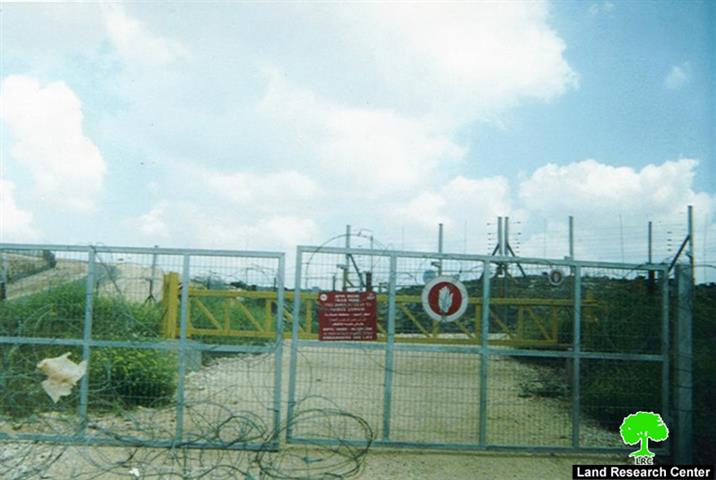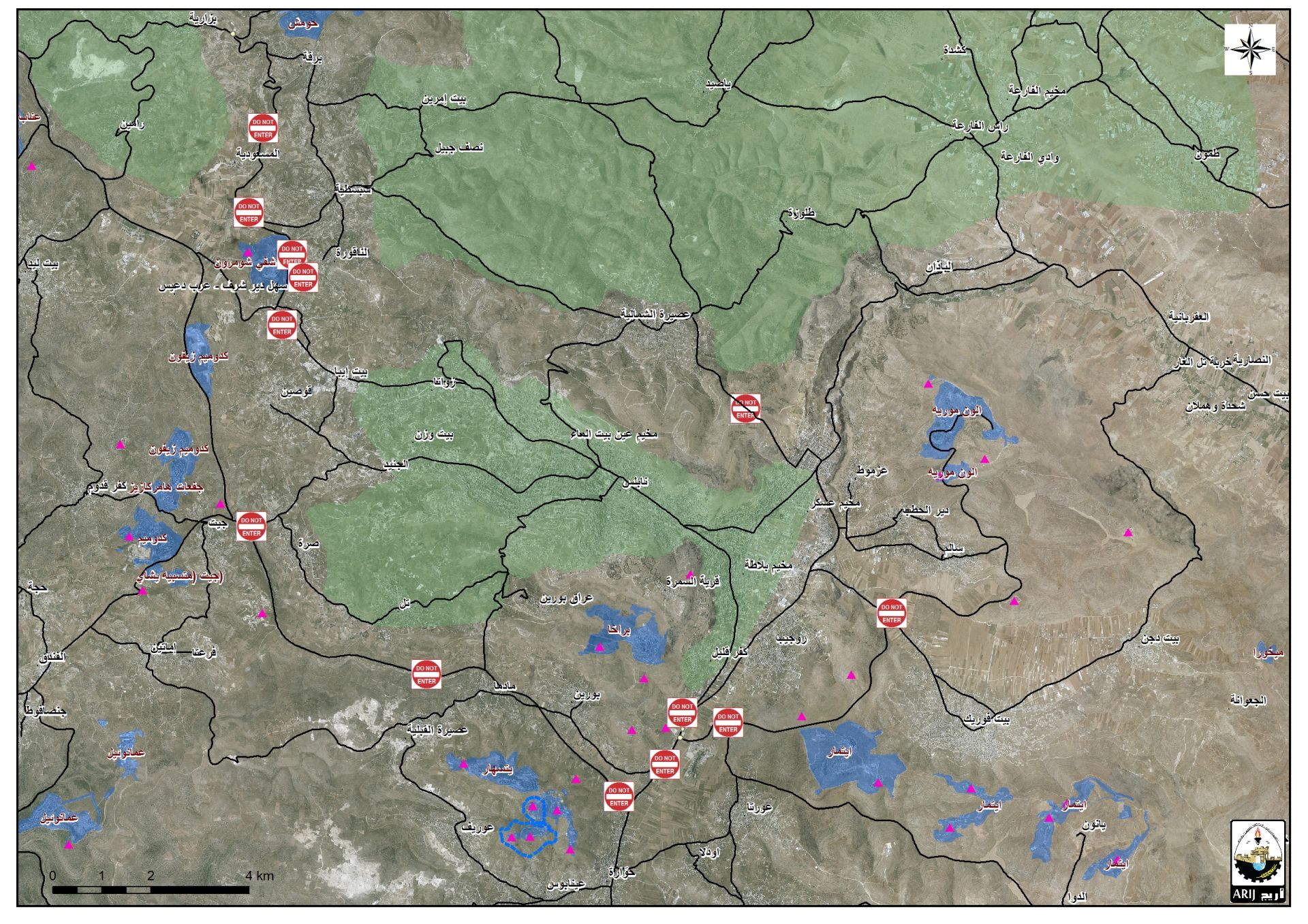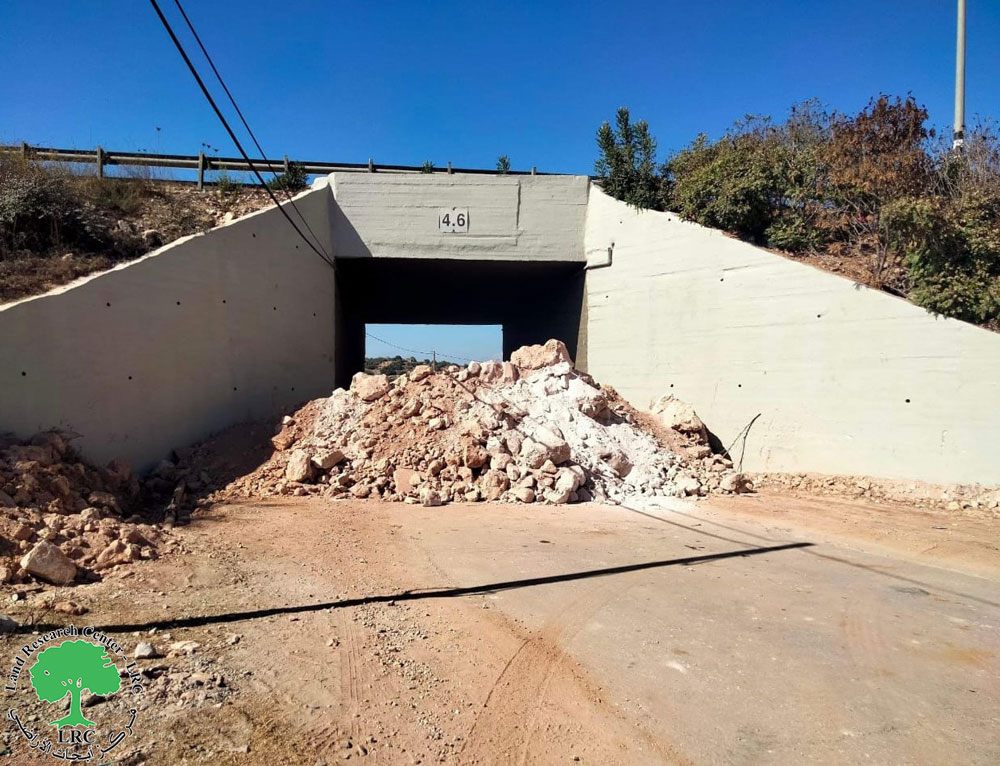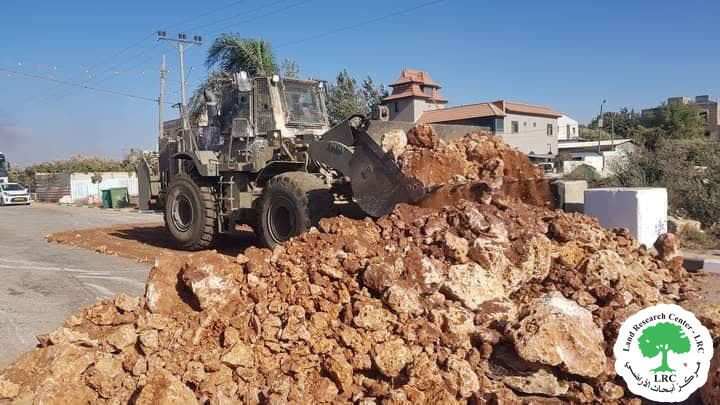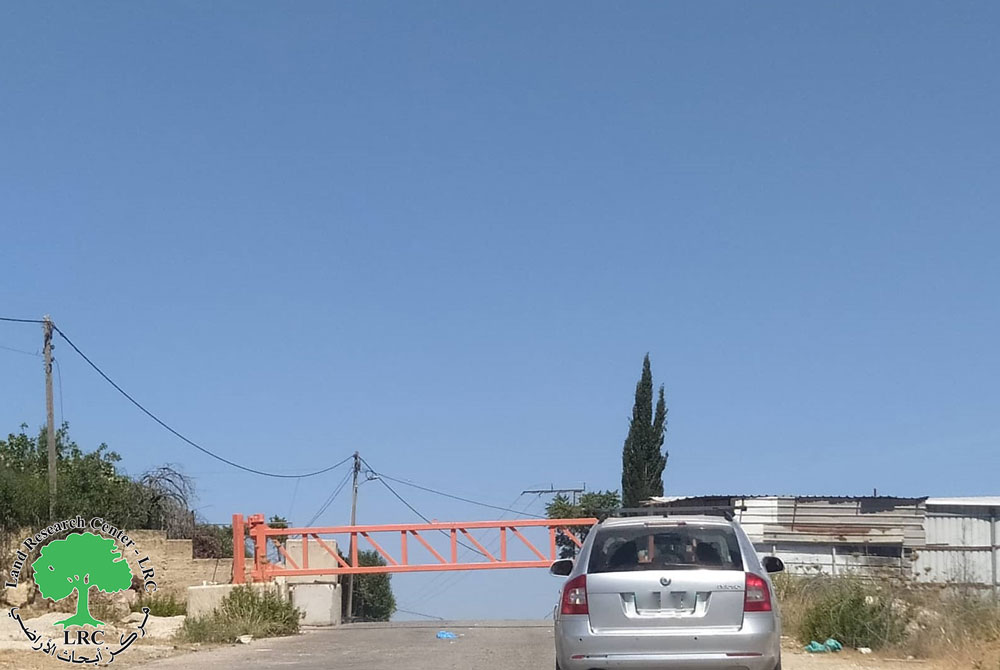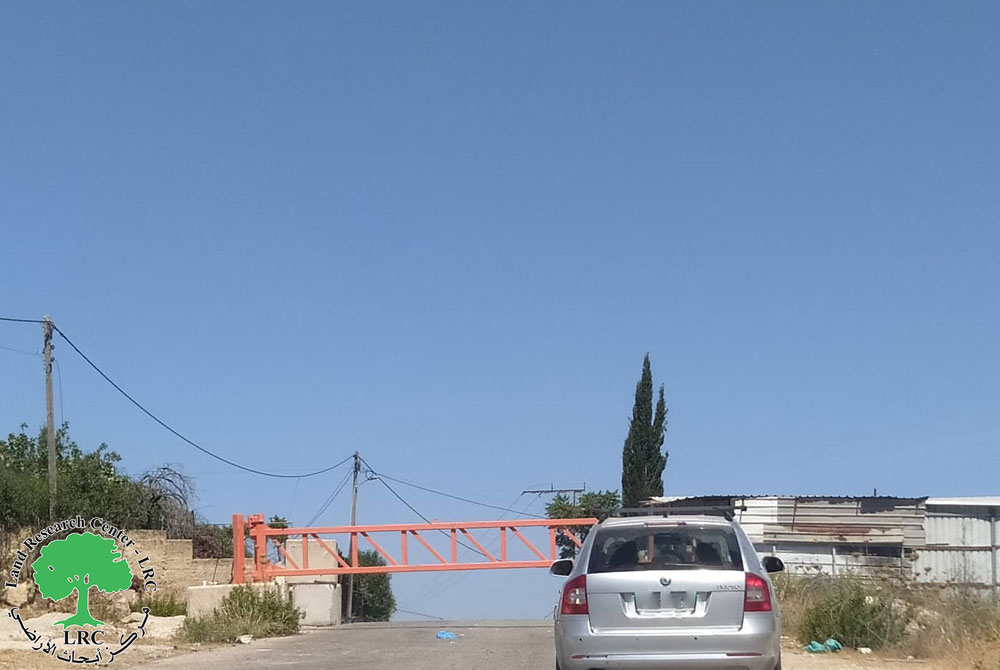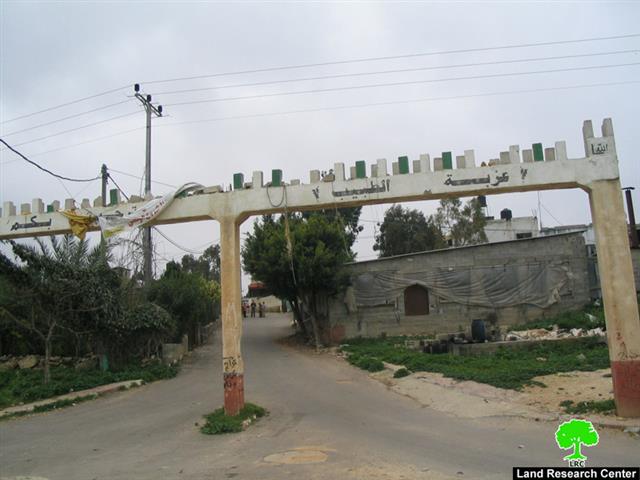(Photo 1: Ar ras village-Tulkarem: the closed agricultural Wall Gate to the west of the village)
The Israeli occupation authorities recently began to impose more restrictions on the movement of farmers from Ar ras village, Tulkarem governorate by denying them passing permits that allow them to access their land which has been separated behind the Segregation Wall since the year 2002.
The Israeli repressive measures, also, includes physical beatings, curses, delays and even detentions for long hours at the Wall Gate number 753 which is the only agricultural Wall Gate that links the Ar ras village with its lands behind the Wall. Even those who carry valid passing permits are being humiliated and badly treated at this Wall Gate at the hands of Israeli soldiers stationed there.
Ever since the establishment of the Wall in the western side of the village in the year 2002, more than 140 farmers' families from the village have been gone under procrastination measures in receiving their passing permits from the Israeli military for the purpose of going through the Gate into their lands. For example, during last olive picking season, only 10% of those family farmers were given a three- month-long passing permits limited to one or two members form each family although the olive picking is a family based collective work that cannot be carried out by one or two persons from each family. Upon their expiry, the permits haven't been renewed yet.
(Photo 2: Ar ras village-Tulkarem: a section of the Wall built on the village land)
Further obstacles
The Israeli military have added further obstacles in the face of those farmers wanting to get new passing permits or have the old ones renewed. Such obstacles encompass that each applicant should acquire topographic and aerial maps for his land, in addition to land registration papers and taboos as requisites. Such conditions are not easy to fulfill under the current circumstances. On the other hand, no agricultural machinery is allowed through the Gate which increases pressure on farmers because of the remoteness of the land and the need for machinery to carry out the work.
Closing of Jubara Wall gate
In related development, the Israeli occupation authorities started six months ago to intermittently close the Khirbet Jubara Wall Gate which is located to the north of Ar Ras village. It is worth mentioning that the Khirbet Jubara is totally isolated inside the Wall with only one gate. Whence this gate is closed people are obliged to take an 8 km long journey through Ar ras Wall Gate number 753 which means more economic and psychological hardships.
Location, population and area
The village of Al Ras is located 12 kilometers to the south of the city of Tulkarem in a close proximity to the Green Line. According to the latest statistics the population of the village is approximately 650. The main clans of the village are the Awad, Oudeh and Qasem clans. Moreover, there is a small refugee clan (called the Atta clan) whose roots go back to the nearby village of Al Tieba which was occupied in 1948. See Map 1
About 90% of the population depend on agriculture as the only source of income while 5% of the population are employed in the private and public sectors. The remaining 5% of the population are craftsmen and laborers. The village's total surface area is about 6000 dunums, of which 214 dunums are built up area.
The village and Wall
The Wall was built in the village land in the year 2002 at the distance of 7 km starting from Faro'un village in the north to Kafr Sur in the south leading to the destruction and separation of about 2000 dunums from Ar ras village land. When the Wall works started Israeli bulldozers plowed more than 340 dunums of the village�s land. Yet, this alone did not please the settlers of the nearby settlement of Sal'it who claimed that the construction of the Wall as planned would leave the settlement east of the Wall. As such, occupation authorities re-aligned the course of the Wall eastward to include Sal'it. The result of this alignment was the destruction of more dunums, the uprooting of more trees and the isolation of about 1600 dunums behind it.
(Photo 3: Ar ras village-Tulkarem: A general view of the Wall in the area )
General Effects of the Segregation Wall on the Village
A) – Economic effects:
As mentioned earlier, the realigned Wall has led to the destruction and isolation of about 2000 dunums. Most of these dunums were (and still are) planted with olive trees and some of it were planted with vegetations. In addition to the plowing and destruction of water networks, agricultural installations, roads and green houses a number of animal barns were left behind the Wall. Finally, the erection of the Wall has caused the confiscation of all animal vegetation sources in the village.
(photo 4: Ar ras village-Tulkarem: one of the green houses destroyed
to make room for the construction of the Wall )
All the above-mentioned actions caused the total collapse of the agricultural sector in the village which provided about 90% of the village�s total income.
B) – Social Effects:
The construction of the Wall has led to the total isolation of two houses of the village owned by Mr. Yousef Bdeirat and Mr. Azmi Al Dmairy. In addition, a house under construction was also demolished under the pretext that it was too close to the Wall. Such a fact led to an increased difficulty in the physical communication between the isolated families and the rest of the villagers; if a member of the isolated families wanted to reach the village he would be obliged to reach Al Kufriat checkpoint (about 8 kilometers away) and then drive an additional 8 kilometers towards the southern part of the village. Such a trip lasts for about 2 hours whereas it used to be covered in less than 5 minutes before the erection of the Wall.
C) – Psychological Effects:
There is no doubt that the establishment of the Wall has sent the spirit of depression and despair in the hearts of the villagers whose lands were isolated behind it. That is in addition to the spirit of fear and misery as the Wall has transformed the village into a big concentration prison.
Prepared by
The Land Research Center
LRC


